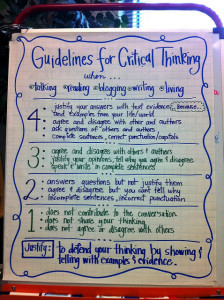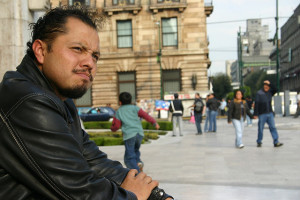2.3: Critical Thinking
- Page ID
- 38189
\( \newcommand{\vecs}[1]{\overset { \scriptstyle \rightharpoonup} {\mathbf{#1}} } \)
\( \newcommand{\vecd}[1]{\overset{-\!-\!\rightharpoonup}{\vphantom{a}\smash {#1}}} \)
\( \newcommand{\id}{\mathrm{id}}\) \( \newcommand{\Span}{\mathrm{span}}\)
( \newcommand{\kernel}{\mathrm{null}\,}\) \( \newcommand{\range}{\mathrm{range}\,}\)
\( \newcommand{\RealPart}{\mathrm{Re}}\) \( \newcommand{\ImaginaryPart}{\mathrm{Im}}\)
\( \newcommand{\Argument}{\mathrm{Arg}}\) \( \newcommand{\norm}[1]{\| #1 \|}\)
\( \newcommand{\inner}[2]{\langle #1, #2 \rangle}\)
\( \newcommand{\Span}{\mathrm{span}}\)
\( \newcommand{\id}{\mathrm{id}}\)
\( \newcommand{\Span}{\mathrm{span}}\)
\( \newcommand{\kernel}{\mathrm{null}\,}\)
\( \newcommand{\range}{\mathrm{range}\,}\)
\( \newcommand{\RealPart}{\mathrm{Re}}\)
\( \newcommand{\ImaginaryPart}{\mathrm{Im}}\)
\( \newcommand{\Argument}{\mathrm{Arg}}\)
\( \newcommand{\norm}[1]{\| #1 \|}\)
\( \newcommand{\inner}[2]{\langle #1, #2 \rangle}\)
\( \newcommand{\Span}{\mathrm{span}}\) \( \newcommand{\AA}{\unicode[.8,0]{x212B}}\)
\( \newcommand{\vectorA}[1]{\vec{#1}} % arrow\)
\( \newcommand{\vectorAt}[1]{\vec{\text{#1}}} % arrow\)
\( \newcommand{\vectorB}[1]{\overset { \scriptstyle \rightharpoonup} {\mathbf{#1}} } \)
\( \newcommand{\vectorC}[1]{\textbf{#1}} \)
\( \newcommand{\vectorD}[1]{\overrightarrow{#1}} \)
\( \newcommand{\vectorDt}[1]{\overrightarrow{\text{#1}}} \)
\( \newcommand{\vectE}[1]{\overset{-\!-\!\rightharpoonup}{\vphantom{a}\smash{\mathbf {#1}}}} \)
\( \newcommand{\vecs}[1]{\overset { \scriptstyle \rightharpoonup} {\mathbf{#1}} } \)
\( \newcommand{\vecd}[1]{\overset{-\!-\!\rightharpoonup}{\vphantom{a}\smash {#1}}} \)
Writing and Critical Thinking
We have seen how writing in college requires you to use higher order thinking skills such as analyzing, evaluating, and creating. These higher level abilities require critical thinking, which is a core skill emphasized by college professors, not just for college academic life, but also for navigating the choices you make as a citizen and member of your family and different communities. This is because critical thinking skills are perhaps the most fundamental skills involved in making judgments and solving problems. You use them every day, and you can continue improving them.

The ability to think critically about a matter—to analyze a question, situation, or problem down to its most basic parts—is what helps us evaluate the accuracy and truthfulness of statements, claims, and information we read and hear. It is the sharp knife that, when honed, separates fact from fiction, honesty from lies, and the accurate from the misleading. We all use this skill to one degree or another almost every day. For example, we use critical thinking every day as we consider the latest consumer products and why one particular product is the best among its peers. Is it a quality product because a celebrity endorses it? Because a lot of other people may have used it? Because it is made by one company versus another? Or perhaps because it is made in one country or another? These are questions representative of critical thinking.
The academic setting demands more of us in terms of critical thinking than everyday life. It demands that we evaluate information and analyze myriad issues. It is the environment where our critical thinking skills can be the difference between success and failure. In this environment, we must consider information in an analytical, critical manner. We must ask questions—What is the source of this information? Is this source an expert one, and what makes that so? Are there multiple perspectives to consider about an issue? Do multiple sources agree or disagree on an issue? Does quality research substantiate information or opinion? Do I have any personal biases that may affect my consideration of this information?
It is only through purposeful, frequent, intentional questioning such as this that we can sharpen our critical thinking skills and improve as students, learners and researchers.
—Dr. Andrew Robert Baker, Foundations of Academic Success: Words of Wisdom
Defining Critical Thinking
Thinking comes naturally. You don’t have to make it happen—it just does. But you can make it happen in different ways. For example, you can think positively or negatively. You can think with “heart,” and you can think with rational judgment. You can also think strategically and analytically, as well as mathematically and scientifically. These are a few of multiple ways in which the mind can process thought.
What are some forms of thinking you use? When do you use them, and why?
As a college student, you are tasked with engaging and expanding your thinking skills. One of the most important of these skills is critical thinking. Critical thinking is important because it relates to nearly all tasks, situations, topics, careers, environments, challenges, and opportunities. It’s not restricted to a particular subject area.

Critical thinking is clear, reasonable, reflective thinking focused on deciding what to believe or do. It means asking probing questions like, “How do we know?” or “Is this true in every case or just in this instance?” It involves being skeptical and challenging assumptions, rather than simply memorizing facts or blindly accepting what you hear or read.
Imagine, for example, that you’re reading a history textbook. You wonder who wrote it and why because you detect certain assumptions in the writing. You find that the author has a limited scope of research focused only on a particular group within a population. In this case, your critical thinking reveals that there are “other sides to the story.”
Who are critical thinkers, and what characteristics do they have in common? Critical thinkers are usually curious and reflective people. They like to explore and probe new areas and seek knowledge, clarification, and new solutions. They ask pertinent questions, evaluate statements and arguments, and they distinguish between facts and opinion. They are also willing to examine their own beliefs, possessing a manner of humility that allows them to admit lack of knowledge or understanding when needed. They are open to changing their mind. Perhaps most of all, they actively enjoy learning, and seeking new knowledge is a lifelong pursuit.
This may well be you!
No matter where you are on the road to being a critical thinker, you can always more fully develop your skills. Doing so will help you develop more balanced arguments, express yourself clearly, read critically, and absorb important information efficiently. Critical thinking skills will help you in any profession or any circumstance of life, from science to art to business to teaching.
| Critical Thinking IS | Critical Thinking is NOT |
|---|---|
| Skepticism | Memorizing |
| Examining assumptions | Group thinking |
| Challenging reasoning | Blind acceptance of authority |
| Uncovering biases | Biased viewpoints |
Critical Thinking in Action
The following video, from Lawrence Bland, presents the major concepts and benefits of critical thinking.
Critical Thinking and Logic
Critical thinking is fundamentally a process of questioning information and data. You may question the information you read in a textbook, or you may question what a politician or a professor or a classmate says. You can also question a commonly held belief or a new idea. With critical thinking, anything and everything is subject to question and examination.
Logic’s Relationship to Critical Thinking
The word logic comes from the Ancient Greek logike, referring to the science or art of reasoning. Using logic, a person evaluates arguments and strives to distinguish between good and bad reasoning, or between truth and falsehood. Using logic, you can evaluate ideas or claims people make, make good decisions, and form sound beliefs about the world.[1]
Questions of Logic in Critical Thinking
Let’s use a simple example of applying logic to a critical-thinking situation. In this hypothetical scenario, a man has a PhD in political science, and he works as a professor at a local college. His wife works at the college, too. They have three young children in the local school system, and their family is well known in the community.
The man is now running for political office. Are his credentials and experience sufficient for entering public office? Will he be effective in the political office? Some voters might believe that his personal life and current job, on the surface, suggest he will do well in the position, and they will vote for him.
In truth, the characteristics described don’t guarantee that the man will do a good job. The information is somewhat irrelevant. What else might you want to know? How about whether the man had already held a political office and done a good job? In this case, we want to ask, "How much information is adequate in order to make a decision based on logic instead of assumptions?"
The following questions, also presented in Figure 1, below, are ones you may apply to formulate a logical, reasoned perspective in the above scenario or any other situation:
- What’s happening? Gather the basic information and begin to think of questions.
- Why is it important? Ask yourself why it’s significant and whether or not you agree.
- What don’t I see? Is there anything important missing?
- How do I know? Ask yourself where the information came from and how it was constructed.
- Who is saying it? What’s the position of the speaker and what is influencing them?
- What else? What if? What other ideas exist and are there other possibilities?

Problem-Solving with Critical Thinking

For most people, a typical day is filled with critical thinking and problem-solving challenges. In fact, critical thinking and problem-solving go hand-in-hand. They both refer to using knowledge, facts, and data to solve problems effectively. But with problem-solving, you are specifically identifying, selecting, and defending your solution. Below are some examples of using critical thinking to problem solve:
- Your roommate was upset and said some unkind words to you, which put a crimp in your relationship. You try to see through the angry behaviors to determine how you might best support your roommate and help bring your relationship back to a comfortable spot.
- Your campus club has been languishing because of lack of participation and funds. The new club president, though, is a marketing major and has identified some strategies to interest students in joining and supporting the club. Implementation is forthcoming.
- Your final art class project challenges you to conceptualize form in new ways. On the last day of class when students present their projects, you describe the techniques you used to fulfill the assignment. You explain why and how you selected that approach.
- Your math teacher sees that the class is not quite grasping a concept. She uses clever questioning to dispel anxiety and guide you to new understanding of the concept.
- You have a job interview for a position that you feel you are only partially qualified for although you really want the job and you are excited about the prospects. You analyze how you will explain your skills and experiences in a way to show that you are a good match for the prospective employer.
- You are doing well in college, and most of your college and living expenses are covered. But there are some gaps between what you want and what you feel you can afford. You analyze your income, savings, and budget to better calculate what you will need to stay in college and maintain your desired level of spending.
Problem-Solving Action Checklist
Problem-solving can be an efficient and rewarding process, especially if you are organized and mindful of critical steps and strategies. Remember, too, to assume the attributes of a good critical thinker. If you are curious, reflective, knowledge-seeking, open to change, probing, organized, and ethical, your challenge or problem will be less of a hurdle, and you’ll be in a good position to find intelligent solutions.
| STRATEGIES | ACTION CHECKLIST[2] | |
|---|---|---|
| 1 | Define the problem |
|
| 2 | Identify available solutions |
|
| 3 | Select your solution |
|
The following video demonstrates problem solving in our personal lives.
It's Not About the Nail by Jason Headley. All Rights Reserved. Standard YouTube license.
While this video is a lighthearted take on relationship problems, it is true that problem solving in any relationship can be difficult, whether that relationship is between two people in an intimate relationship, or between two roommates, or between two friends.
Example of Relationship Problem Solving using Critical Thinking
Anika’s roommate, Eli, was upset and he said some unkind words to her, which put a crimp in the relationship. Anika wants to try to see through the angry behaviors to determine how she might best support Eli and help bring the relationship back to a comfortable spot. How should Anika proceed?
First, let’s help Anika identify the problem. How would you describe the problem? Here are some options:
- Eli behaved inappropriately
- Anika is being too sensitive
- Anika and Eli are probably not a great fit as roommates
The best problem description is the first one – Eli behaved inappropriately. All of us at some point get upset and say things at times that hurt others. That doesn’t mean it’s acceptable, but it also doesn’t mean that Anika and Eli are unable to solve the problem and continue their relationship.
Now that Anika has identified the problem – Eli behaved inappropriately – what are some possible solutions? Here are some options:
- Anika should ignore Eli – eventually he’ll figure out that he did something wrong and apologize.
- Anika should ask Eli to sit down and discuss the problem right away.
- Anika should give Eli a little space and then talk to him.
Ignoring Eli is probably not a good solution. While it’s perfectly natural for Anika to be angry about Eli’s unkind words and want to ignore him, that doesn’t address the problem. The other two options are better solutions.
Think through the pros and cons of each of the two possible solutions. Which one do you think is best?
It’s a great idea for Anika to sit down and discuss the problem with Eli – this is a much healthier option than ignoring the problem. Whether or not she talks to Eli right away is likely a judgment call depending on the situation. If Eli is really upset, it might be better to wait a little while until he calms down and can have a more productive discussion.
Anika observed that Eli seemed pretty upset, and so decided to wait a few hours before talking with him. When she did talk to him later that afternoon, Anika told Eli that she valued his friendship, but that his unkind words were hurtful to her.
Eli explained that he has been getting continually more upset since he got a poor grade on his French mid-term. He needs to pass the class for his major, and has been stressed about the situation. He apologized for his earlier words, and Anika forgave him.
By using problem-solving skills, Anika was able to handle this situation in an effective way that resulted in a relatively quick resolution rather than letting it escalate into a more difficult situation that would be harder to resolve and would likely result in more pain on both sides of the relationship.
Exercise
Exercise 1
Use the "Problem Solving Action Checklist" to find a way solve the following problem.
Problem: You are overwhelmed with both work and school and don't know what to do. Your grades are slipping, and your manager has written you up for being late for work. How can you solve this problem and decrease your stress levels?
Define the problem:
Identify available solutions:
Select your solution:
Explain why you selected this solution:
Contributors
- Adapted from Critical Thinking in Basic Reading and Writing. Provided by: Lumen Learning. License: CC BY: Attribution.


